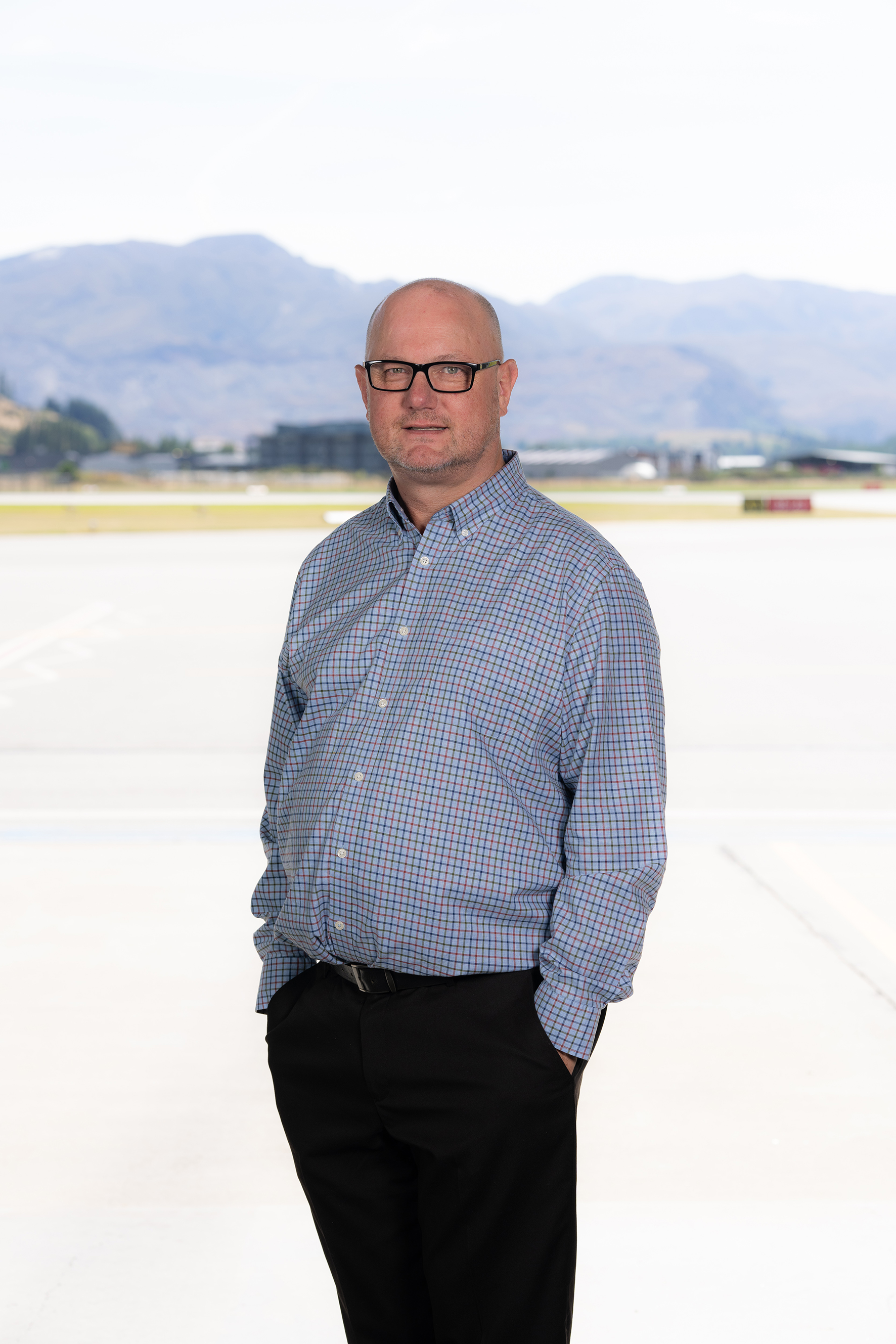
Wayne Stiven is a man with many responsibilities. As Queenstown Airport’s Head of Assets and the Airport Emergency Service, he leads a team looking after everything from the runway to the rubbish.
It’s a job he relishes, enjoying both the variety of the work and the camaraderie among the members of his team. However, he acknowledges working at an airport does not suit everyone.
“The dynamic nature of aviation means you have to be able to adapt quickly to changing situations and, underpinning that, you have to be well prepared and highly organised.”
 Wayne brought a wealth of experience in information
technology, systems development, and project management with him when he joined
the Queenstown Airport team in 2016. His initial title was Technology Manager but
over time the scope of his role has expanded considerably.
Wayne brought a wealth of experience in information
technology, systems development, and project management with him when he joined
the Queenstown Airport team in 2016. His initial title was Technology Manager but
over time the scope of his role has expanded considerably.
“Airport infrastructure is complex, so we have to be multi-taskers, and we get to work on a range of really interesting projects.”
The latest is the installation of an engineered materials arresting system (EMAS), which is designed to safely bring an aircraft to a controlled stop with little damage, should one overshoot the main runway. Such incidents are rare, but the airport wants to reduce the risk if an overrun did occur at Queenstown.
“We are proud to be the first airport in New Zealand or Australia to invest in this technology, which has been well proven in the northern hemisphere,” Wayne says. “It exceeds what we are required to do under civil aviation regulations and it’s proof we take safety very seriously.”
The project has a price tag of more than $20 million. Preliminary work is just getting under way and the project should be finished by late summer.
Another thing Queenstown Airport takes seriously is its Sustainability Strategy.
“It guides all our decisions and how we do business,” Wayne says.
As maintenance is scheduled and facilities are upgraded, he and his team look for opportunities to reduce greenhouse gas emissions, introduce more sustainable practices, and support this region’s biodiversity.
Recently, six chargers were installed to enable airlines to use electric ground service equipment to position, load, and unload aircraft at Queenstown Airport.
“To make that possible, we had to increase the capacity of one of the airport’s two electrical transformers.”
The airport also provides free charging for electric vehicles in its car parks, although standard parking fees apply, and it has an electric car for staff to use when travelling around the region.
“We’ll add more electric vehicles to our fleet as soon as suitable models are available,” Wayne says.
Another important project is an upgrade of the system used to ventilate and control the temperature in the airport terminal. Some of the parts are 25 years old.
“We have a dry, low-corrosion environment,” Wayne says. “That means components last much longer than usual here, which is good from a cost perspective, but a diesel boiler is used to preheat the system. Decommissioning that is an essential part of our decarbonisation programme, so as we upgrade each section, we are clipping it off and transferring it to electric preheating.”
This work is scheduled for completion over the next 12 months, then the boiler will be switched off permanently.
Efficient use of energy is a key focus of the terminal upgrade programme, with LED lighting fitted throughout the building and sophisticated sensor technology used to switch it off when it is not needed.
“It’s a dual thing: it reduces energy usage and it saves us money.”
Wayne says Queenstown Airport is successfully using technology to drive innovation, efficiency, and optimisation.
A good example is the self-service check-in kiosks and automated bag drops, which have significantly sped up passenger processing and reduced queues.
“That greatly improves the customer experience.”
However, reducing waste is proving to be a tougher challenge.
The assets and facilities team works hard to find new uses for materials.
Carpet tiles removed from the terminal have been given away and laid in garages, sheds, and kennels across the Whakatipu Basin.
Asphalt millings produced during runway maintenance are used to form paths and car parks.
Food scraps and other organic waste is composted on site. The compost is then used to nourish the airport’s gardens, which showcase native plants and create a distinctive sense of place for people arriving in Queenstown.
Getting people to separate recyclable materials into the correct bins is difficult and high contamination rates mean some ends up in landfill. As a solution, a sorting programme is being established.
“It’s unfortunate that is necessary, but we are committed to doing everything we can to protect the environment, and if that means rummaging through the rubbish, then that’s what we’ll do,” Wayne says.
That 'can-do' attitude is making a positive difference for both the business and the planet.

